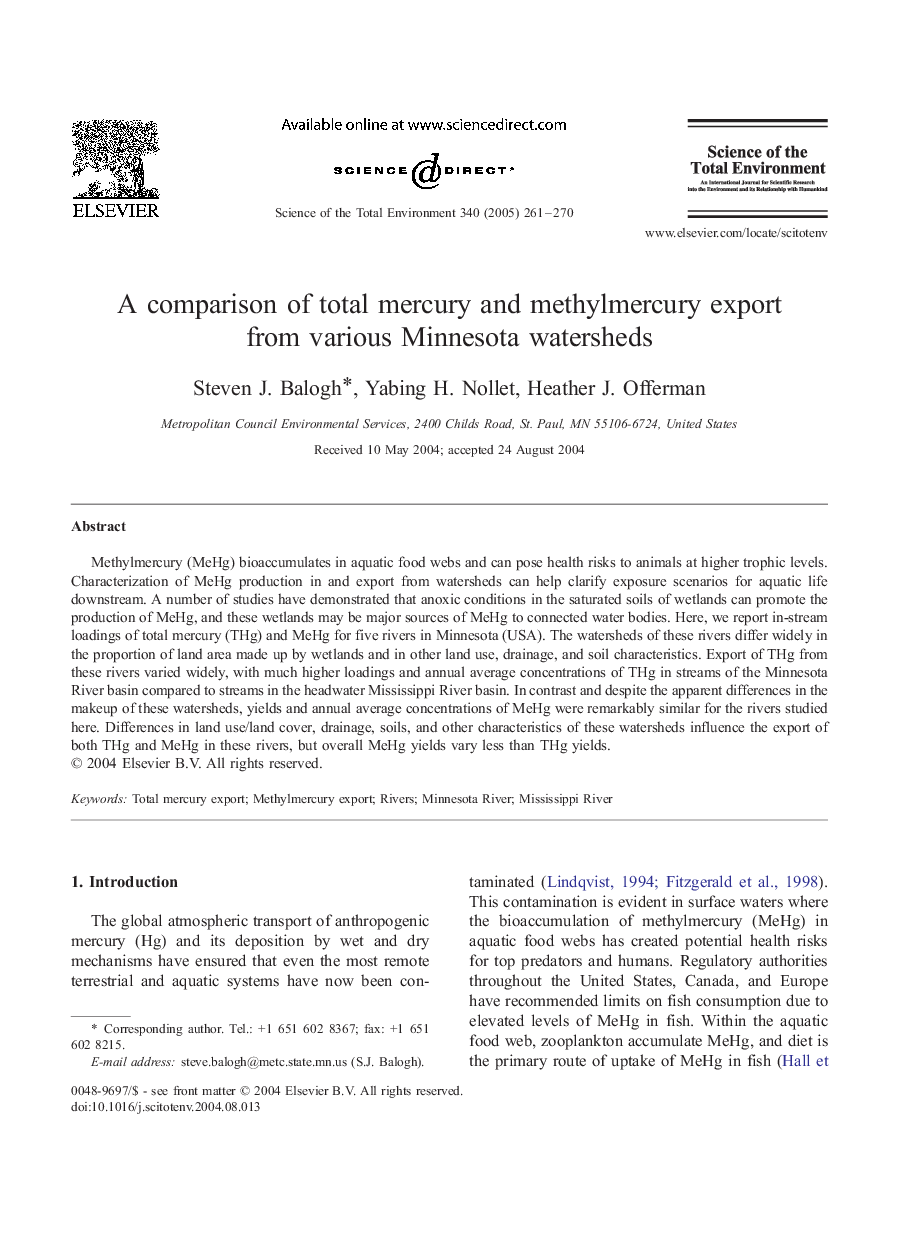| Article ID | Journal | Published Year | Pages | File Type |
|---|---|---|---|---|
| 10110925 | Science of The Total Environment | 2005 | 10 Pages |
Abstract
Methylmercury (MeHg) bioaccumulates in aquatic food webs and can pose health risks to animals at higher trophic levels. Characterization of MeHg production in and export from watersheds can help clarify exposure scenarios for aquatic life downstream. A number of studies have demonstrated that anoxic conditions in the saturated soils of wetlands can promote the production of MeHg, and these wetlands may be major sources of MeHg to connected water bodies. Here, we report in-stream loadings of total mercury (THg) and MeHg for five rivers in Minnesota (USA). The watersheds of these rivers differ widely in the proportion of land area made up by wetlands and in other land use, drainage, and soil characteristics. Export of THg from these rivers varied widely, with much higher loadings and annual average concentrations of THg in streams of the Minnesota River basin compared to streams in the headwater Mississippi River basin. In contrast and despite the apparent differences in the makeup of these watersheds, yields and annual average concentrations of MeHg were remarkably similar for the rivers studied here. Differences in land use/land cover, drainage, soils, and other characteristics of these watersheds influence the export of both THg and MeHg in these rivers, but overall MeHg yields vary less than THg yields.
Keywords
Related Topics
Life Sciences
Environmental Science
Environmental Chemistry
Authors
Steven J. Balogh, Yabing H. Nollet, Heather J. Offerman,
